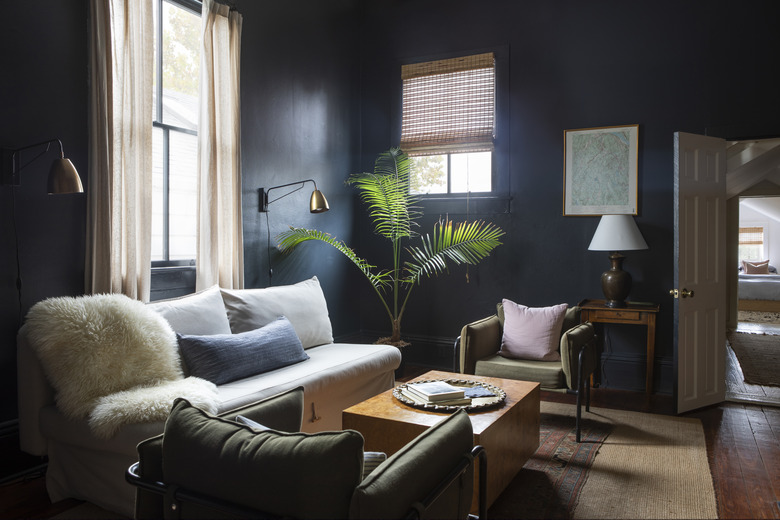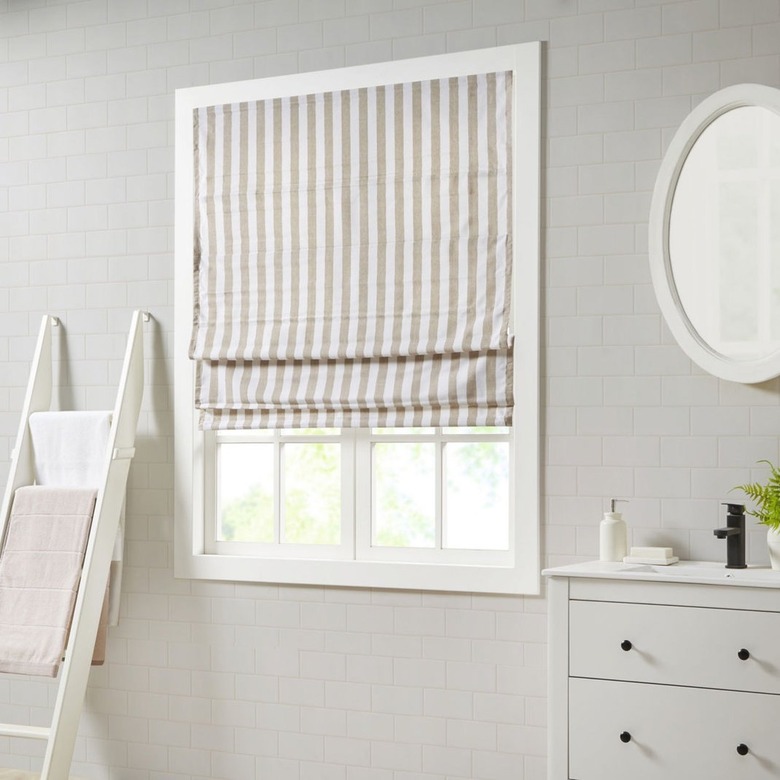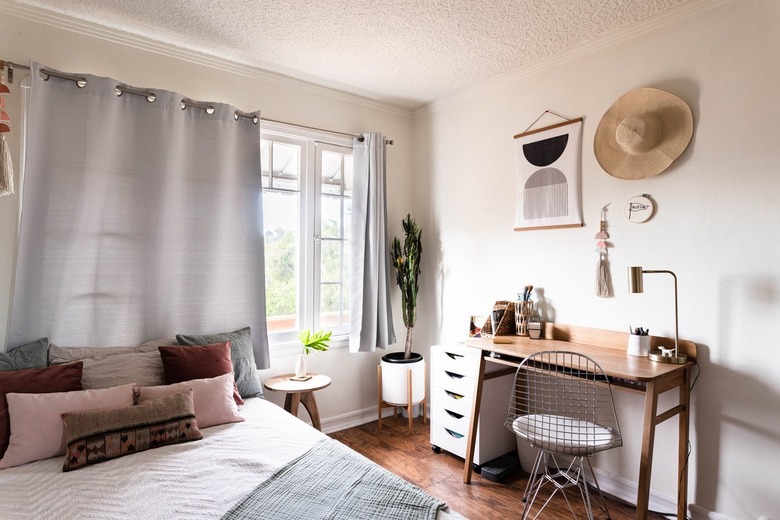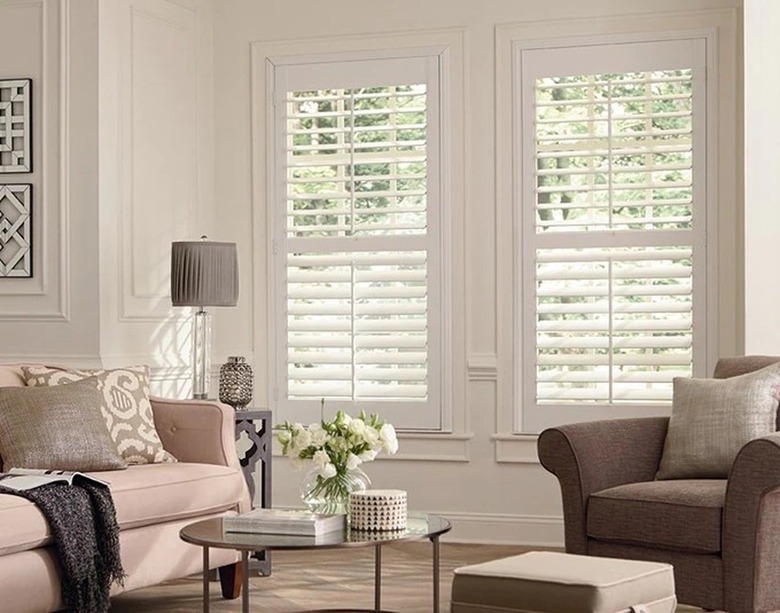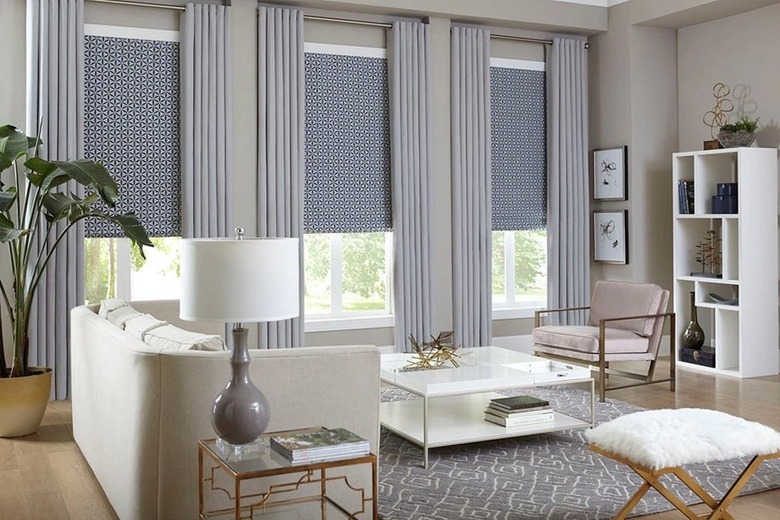Drafty Home? These 5 Window Treatments Can Keep Out The Cold
If you've suffered through winter after freezing winter in a drafty home because you don't want to spend big bucks for energy-efficient window replacements, you may be surprised to know that simply updating your window treatments can actually serve to keep out the cold air. Installing new window coverings to stop the chill doesn't have to mean mounting plastic wrap and wielding your hair dryer, however — you can still get the aesthetics you love in a window covering with the added bonus of warmth and energy savings.
Reasons to Take Action
Reasons to Take Action
According to Energy.gov, a home's wintertime energy efficiency can be decreased by up to 30 percent as a result of poor window insulation, which is a pretty good reason to keep out the cold air. Of course, you don't want to feel air blowing through your house all winter — and piling on bulky sweaters, socks, and thermal ankle boots every day for months can get to be a little much — but saving on your heating bill is important too. Doing nothing to remedy the problem will eventually mean that you've spent enough money unnecessarily on your heating bill to have paid for at least a portion of a window replacement project.
It always makes sense to address winterizing your windows with some DIY caulking around stationary windows and adding weatherstripping to operable windows and doors to stop air leaks. Then, there's the problem of heat and cold passing through the glass, which is most acute with old, single-pane windows or even poorly performing double-pane windows. That's why you need to give thought to window coverings and how to choose what can best block the cold during the winter months.
There are several stylish options that can spice up your décor and help keep you toasty all winter long, so get inspired by these draft-stopping options.
1. Insulated Cellular Shades
1. Insulated Cellular Shades
For leaky windows, insulated cellular shades, sometimes called honeycomb shades, are one of the two most effective window treatments for keeping out the cold air and keeping in the heat. Their unique, air-trapping design includes horizontal, tubular cells whose openings on the sides of the shade resemble the cells of a honeycomb. The trapped air serves as insulation to keep out cold and keep in heat. Air is trapped not only in the shade's core but also between the shade and windowpane. Available in single-, double-, and triple-cell designs, those with more cells trap more air. The only potential drawback to multiple cell layers is increased light-blocking capability, but if you want a shade that blocks light, this is actually a benefit.
Cellular shades normally open up to the top of the window, but there are also top-down, bottom-up versions that open both ways. Better-quality cellular shades are mounted in tracks on the sides that include weatherstripping, greatly increasing their cold-blocking ability. According to Energy.gov, cellular shades installed with a snug fit reduce heat loss by 40 percent or more.
2. Roman Shades
2. Roman Shades
Roman shades fit either inside or outside the window opening and are pulled up or lowered into a folded fabric stack. Because Roman shades are made from fabric, your choices for color and design are endless, but they don't offer significant help with blocking air leaks. When they are made of heavier fabric and paired with draperies or shutters, however, they can give your insulating efforts a boost.
3. Draperies and Curtains
3. Draperies and Curtains
Draperies, which often hang to the floor, and curtains, which commonly stop at the bottom of a windowsill, are double-duty no-brainers when it comes to helping with drafty windows, enhancing a room's decor while blocking cold air. They need to hang close to the window for maximum draft-stopping effect and are even more beneficial when two layers are used. It's important to close drapes and curtains at night and to keep them closed during the day over any windows that get no sunlight.
When you have drapes and curtains that you feel aren't hung close enough to the window they cover, use Velcro or magnetic tape to attach the sides of the curtains to the window frame.
If you decide to switch out your curtains and draperies, consider getting thermal curtains, which are not the same thing as blackout curtains. Quality insulated curtains are made of several layers of fabric with insulating padding between them. Just keep in mind that they're very light-blocking.
4. Louvered Interior Shutters
4. Louvered Interior Shutters
Louvered interior shutters are popular, which is good because they can lend a valuable assist in the fight against drafty windows. Although Venetian blinds and horizontal louvered blinds offer little help with keeping out the cold, louvered interior shutters do, and they're sturdier and easier to clean than other types of blinds.
Instead of hanging loose and being attached at the top, louvered interior shutters are installed securely around the window frame, so they don't wind up sagging. These attractive shutters are available in wood, composite, faux wood, and vinyl, and the materials are all effective in blocking cold air. Wood louvered interior shutters are the most popular but also the most expensive. Faux-wood shutters are the best insulators, composite shutters are the most difficult to install, and vinyl shutters, while most economical, are less durable.
5. Doubled-Up Treatments
5. Doubled-Up Treatments
Double the one-two punch against cold-weather drafts by combining different options. For example, mounting shades with curtains and topping the window with a cornice can cut airflow by as much as 25 percent. Even without a cornice, horizontal blinds or shades paired with draperies or Roman shades paired with shutters can give you even more comfort for your money while helping with the heat bill to boot.
Additional Things to Consider
Additional Things to Consider
If you choose to mount blinds or shades, mount them inside the window casing to most effectively block incoming cold air. Mounting them over the window frame is an option, but you need to make sure that the entire casing is covered.
Make sure that anything mounted inside the window casing winds up at least 1/2 inch from the windowpane and that it's close to touching all four sides.
Finally, admit it: The window insulation kits you pick up at your local home improvement store really do help to keep your home warm, unattractive though they may be. They're cheap compared to a new drapery set or cellular shades, and as long as you have a hair dryer on hand, they're easy. Sometimes, you've gotta do what you've gotta do.
